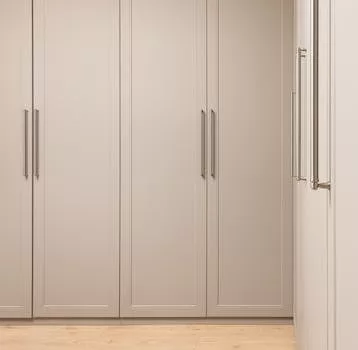Acoustic Optimization for an Immersive Home Theater Experience
A home theater is a luxury that many people dream of having in their homes. It provides a space where you can enjoy your favorite movies, TV shows, and video games with the highest quality audio and visual experience. However, designing a home that is perfect for a home theater requires careful planning and attention to detail. One of the most important aspects of creating an immersive home theater experience is acoustic optimization. In this article, we will discuss the key factors to consider when designing a home with optimal acoustics for a home theater.
First and foremost, the room’s dimensions and layout play a crucial role in determining the quality of sound in your home theater. A rectangular room with a high ceiling is ideal for a home theater, as it allows for better sound distribution and minimizes the chances of standing waves, which can cause audio distortion. Avoid rooms with irregular shapes or low ceilings, as they can create acoustic challenges that are difficult to overcome.
The next step in designing a home with optimal acoustics for a home theater is to choose the right materials for the walls, floors, and ceilings. Hard surfaces, such as concrete or tile, can cause sound to bounce around the room, creating echoes and reducing the overall audio quality. To minimize these issues, consider using softer materials, such as carpet or area rugs, for the floors. For the walls and ceilings, consider using acoustic panels or drywall with added insulation to help absorb sound and prevent it from bouncing around the room.
Another important factor to consider when designing a home with optimal acoustics for a home theater is the placement of windows and doors. Windows can be a significant source of sound leakage, both in and out of the room. To minimize this issue, consider installing double-pane windows with a high STC (Sound Transmission Class) rating. Additionally, ensure that any doors leading into the home theater are solid-core and well-sealed to prevent sound from escaping the room.
Proper speaker placement is also essential for creating an immersive home theater experience. The ideal speaker setup will depend on the specific audio system you choose, but generally, you will want to place the front left and right speakers at an equal distance from the main seating area, with the center speaker directly in front of the seating area. Surround speakers should be placed to the sides and slightly behind the main seating area, while subwoofers can be placed in the front corners of the room for optimal bass distribution.
Finally, it’s essential to consider the impact of ambient noise on your home theater experience. External noise, such as traffic or noisy neighbors, can significantly detract from the immersive experience you’re trying to create. To minimize the impact of external noise, consider adding insulation to the walls and ceilings, as well as sealing any gaps around windows and doors.
In conclusion, designing a home that is perfect for a home theater requires careful consideration of various factors, including room dimensions, materials, window and door placement, speaker placement, and ambient noise. By taking the time to plan and optimize these elements, you can create a home theater that provides an immersive audio and visual experience that rivals even the best commercial theaters. With the right planning and attention to detail, you can transform your home into the ultimate entertainment destination for you and your family.
Lighting and Seating Arrangements for the Ultimate Home Theater Comfort

A home theater is a luxurious addition to any residence, providing a space for family and friends to gather and enjoy movies, television shows, and sporting events in the comfort of your own home. Designing a home that is perfect for a home theater requires careful consideration of various factors, including lighting and seating arrangements. This article will discuss the importance of these elements and provide tips on how to create the ultimate home theater comfort.
Lighting plays a crucial role in creating the perfect ambiance for a home theater. The right lighting can enhance the viewing experience, while poor lighting can detract from it. When designing a home theater, it is essential to consider both the type of lighting and the placement of light fixtures. The goal is to create a balance between ambient lighting and task lighting, ensuring that the room is neither too dark nor too bright.
Ambient lighting refers to the general illumination of the room. This type of lighting is essential for creating a comfortable atmosphere and allowing for safe movement within the space. However, it is important to avoid excessive ambient lighting, as it can cause glare on the screen and make it difficult to see the images clearly. To achieve the right level of ambient lighting, consider using dimmable lights or installing a lighting control system that allows you to adjust the brightness according to your preferences.
Task lighting, on the other hand, is focused on specific areas or objects within the room. In a home theater, task lighting can be used to highlight architectural features, artwork, or other decorative elements. It can also be used to provide illumination for activities such as reading or using a remote control. When selecting task lighting for your home theater, opt for fixtures that can be easily adjusted or directed, such as track lighting or wall-mounted sconces.
In addition to lighting, seating arrangements are another critical aspect of designing a home theater that offers the ultimate comfort. The type of seating you choose, as well as its placement within the room, can significantly impact the overall viewing experience. When selecting seating for your home theater, consider the following factors:
1. Comfort: Above all else, your home theater seating should be comfortable. Look for chairs or sofas with ample cushioning and support, as well as features such as reclining capabilities and built-in cup holders.
2. Size and scale: The size of your seating should be proportionate to the size of the room and the screen. Avoid oversized furniture that can make the space feel cramped, and ensure that there is enough room for everyone to sit comfortably without obstructing the view.
3. Viewing angle: The ideal viewing angle for a home theater is between 30 and 40 degrees, which means that the seats should be placed at a distance of approximately 1.5 to 2.5 times the width of the screen. This will ensure that everyone has an optimal view of the screen without straining their necks or eyes.
4. Sightlines: Make sure that the seating arrangement allows for unobstructed sightlines to the screen. This may require tiered seating or the use of risers to elevate the seats in the back rows.
5. Flexibility: Consider incorporating a variety of seating options, such as recliners, sofas, and bean bags, to accommodate different preferences and viewing situations.
In conclusion, designing a home that is perfect for a home theater requires careful attention to lighting and seating arrangements. By striking the right balance between ambient and task lighting, and selecting comfortable, appropriately sized seating with optimal viewing angles and sightlines, you can create a space that offers the ultimate home theater comfort for you and your guests.
Integrating Technology and Aesthetics for a Seamless Home Theater Design
Designing a home that is perfect for a home theater requires a delicate balance between technology and aesthetics. A well-designed home theater should not only provide an immersive audio-visual experience but also seamlessly integrate with the overall design of the home. This article will discuss some key considerations and tips for creating a home theater that is both technologically advanced and aesthetically pleasing.
One of the first steps in designing a home theater is to determine the ideal location within the home. The room should be large enough to accommodate the desired seating arrangement, screen size, and speaker layout. It is also important to consider the room’s acoustics, as sound can be greatly affected by the shape and materials of the space. A rectangular room with minimal windows and doors is often the best choice, as it allows for more predictable sound reflections and better control over ambient light.
Once the location has been determined, it is time to consider the layout of the home theater. The seating arrangement should be designed to provide optimal viewing angles and comfortable seating for all occupants. This may involve tiered seating or the use of risers to ensure that everyone has a clear view of the screen. The distance between the seating and the screen should also be carefully considered, as it can greatly impact the overall viewing experience. A general rule of thumb is to position the seating at a distance of 1.5 to 2.5 times the diagonal measurement of the screen.
The choice of technology for the home theater is another crucial aspect of the design process. The screen should be large enough to provide an immersive experience, but not so large that it overwhelms the space. A projector and screen combination is often the best choice for a dedicated home theater, as it allows for a larger image and a more cinematic feel. However, a large flat-panel TV may be more appropriate for a multi-purpose room or a smaller space.
The audio system is equally important in creating an immersive home theater experience. A surround sound system with multiple speakers and a subwoofer is essential for achieving a realistic and engaging audio environment. The placement of the speakers should be carefully planned to ensure that sound is evenly distributed throughout the room. In-wall or in-ceiling speakers can be a great option for maintaining a clean and uncluttered aesthetic, while still providing high-quality sound.
Lighting is another important aspect of home theater design. Ambient light should be minimized to ensure that the screen is clearly visible and colors are accurately represented. This may involve the use of blackout curtains or shades, as well as carefully placed lighting fixtures that do not directly illuminate the screen. Dimmable lighting and smart home controls can also be used to create the perfect atmosphere for movie-watching.
Finally, the aesthetic design of the home theater should be carefully considered to create a space that is both visually appealing and conducive to relaxation. This may involve the use of comfortable seating, plush carpets, and tasteful wall treatments to create a cozy and inviting atmosphere. The choice of colors and materials should also be carefully considered, as they can greatly impact the overall feel of the space.
In conclusion, designing a home that is perfect for a home theater involves a careful balance between technology and aesthetics. By considering factors such as room location, layout, audio-visual equipment, lighting, and design elements, it is possible to create a space that provides an immersive and enjoyable movie-watching experience while seamlessly integrating with the overall design of the home. With careful planning and attention to detail, a home theater can become a cherished space for family and friends to gather and enjoy their favorite films and shows.
Q&A
Question 1: What are the key factors to consider when designing a home theater room?
Answer: The key factors to consider when designing a home theater room are room size and shape, lighting, acoustics, seating arrangement, and audiovisual equipment placement.
Question 2: How can I optimize the acoustics in my home theater room?
Answer: To optimize the acoustics in your home theater room, use sound-absorbing materials such as acoustic panels, curtains, and carpets, and avoid parallel walls to minimize sound reflections. Additionally, position speakers and subwoofers strategically for optimal sound distribution.
Question 3: What is the ideal screen size and viewing distance for a home theater?
Answer: The ideal screen size and viewing distance for a home theater depend on the resolution of the screen and personal preferences. As a general guideline, the viewing distance should be 1.5 to 2.5 times the diagonal screen size for a 1080p resolution, and 1 to 1.5 times the diagonal screen size for a 4K resolution.
Conclusion
In conclusion, designing a perfect home theater requires careful planning and consideration of factors such as room size, layout, lighting, acoustics, seating, and equipment. By prioritizing these elements and incorporating them into the design, homeowners can create an immersive and enjoyable cinematic experience within the comfort of their own home.


